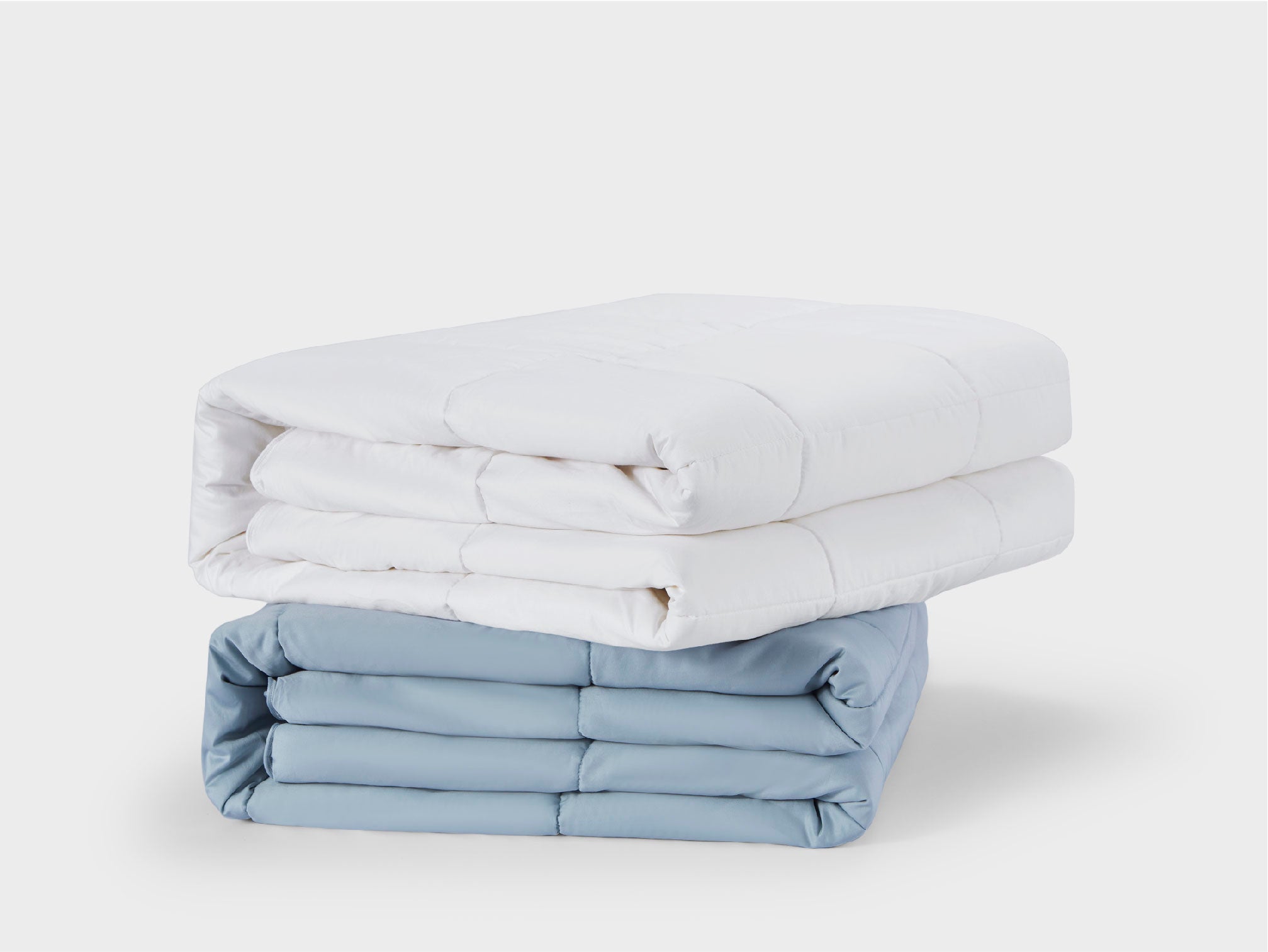Everyone has had the challenge of putting the cover back on the comforter when changing bedding. For many, this seemingly simple task is surprisingly difficult and time-consuming. As someone who lives alone a lot, I had to find a way to solve this problem that was both quick and effective.
Today, I'm going to share with you the experiences and techniques I've learned in practice to help you accomplish this seemingly tedious task with ease.
Why You Should Wear a Duvet?
A duvet cannot be washed often without a cover. It will feel very uncomfortable after sleeping for a long time. And as soon as it gets a little dirty, the duration of the duvet will be drastically reduced. What are the benefits of having a duvet?
Stylish and Practical
Duvet covers not only look stylish, but they are also very practical. They protect your duvet or comforter from spills, stains, and everyday wear and tear, easily extending its life.
Flexible Style
Duvets come in a variety of materials, colors, and textures. Whether it's a warm facecloth in the winter or light cotton in the summer, there's a corresponding choice and a wide range of styles.
Guaranteed Sleep Quality
According to a survey of 1,200 adults, the type of bedding significantly affects the quality of sleep. It has been found that using a duvet improves the quality of sleep.
Easy to Clean
They are easily removable and machine washable, making it simple to keep your bedding clean and fresh.

You should get a duvet cover if you have one. He will give you a lot of convenience. If you have decided to buy one, you can come to Souverhome and have a look. We have bamboo duvet covers and cotton duvet covers. You can contact us with any bed linen questions you may have!
How to Put a Duvet Cover?
Putting on a duvet cover can be a challenging task, but there are several ways to make the process easier and more manageable. Let's explore some effective tips.
Traditional Method
Here are the steps to cover a duvet cover with ties using the traditional method:
Step 1: Prepare the Bedding
Lay the duvet or comforter flat on the bed in the correct orientation, making sure the sheets have been neatly laid out with the corner pieces facing up.
Step 2: Place the Duvet Cover
Turn the duvet cover over so that the inside is facing outwards and lay it flat on top of the duvet or comforter, making sure that the four corners of the duvet cover line up with the corners of the comforter and that the opening of the duvet cover is on the side of the bed.
Step 3: Tie to Secure
Secure the corner ties of the duvet cover to the corner tabs of the comforter or duvet, making sure everything is lined up and attached.
Step 4: Flip the Duvet Cover
Reach through the opening of the duvet cover, grab the top corner of the opposite corner, and flip the entire comforter over with the cover in place. Make sure the comforter is facing out and the opening of the cover is on the side of the foot of the bed.
Step 5: Close the Opening
Leave the opening of the duvet cover open, then tuck the remaining duvet inside the cover, and finally fasten the zipper or button to ensure that the duvet does not slip out of the cover.
Step 6: Finishing
Shake the duvet cover to distribute the filling inside and achieve the desired fluffiness.Place the duvet cover and comforter back on the bed, flatten the bottom corners, and zipper or button the cover.
Rolling "Burrito or California Roll" Method
The California roll method (also known as the burrito roll method) is a popular and effective way to easily cover a down comforter. Below is a detailed step-by-step guide:
Step 1: Prepare the Duvet Cover
- Turn the duvet cover over so that the inside is facing out.
- Lay the duvet cover flat on the bed, making sure the opening is at the end of the bed.
Step 2: Place the Duvet
- Lay the duvet flat on top of the duvet cover, making sure that the corners of the core line up with the corners of the cover.
- If both the duvet cover and duvet cover have corner straps or buckles, they should be bound or buckled at this point to ensure they are secured.
Step 3: Start Rolling up
- Starting on the opposite side of the duvet cover opening (the side at the head of the bed), roll the duvet and cover together tightly, like a large burrito.
- Make sure to roll tightly to avoid the bedding shifting as you roll.
Step 4: Tuck in the Duvet Cover
- When rolling to the end of the bed, flip the ends of the rolled section into the opening of the comforter cover.
- Make sure each corner of the comforter is tucked into the corresponding corner of the coverlet.
Step 5: Unroll and Adjust
- Carefully unroll the entire structure towards the head of the bed.
- Once unfolded, the duvet will be naturally inside the duvet cover, at this point tighten and adjust the corners and edges of the duvet cover to ensure even distribution.
- Close the zipper or fasten the buttons of the duvet cover to ensure that the duvet does not slip out of the cover.
Step 6: Final Finishing
- Shake the duvet cover to distribute the filling inside and achieve the desired fluffiness.
- Give the duvet cover a final leveling to ensure a neat appearance.

Other Methods
There are other ways to handle the traditional method and Rolling "Burrito or California Roll" Method besides. Here are a few more for you.
Using a Clothesline
If you have outdoor space and a clothesline, then this step may revolutionize your bed-changing habits.
- Step 1: Hang the duvet cover on the clothesline so that the opening at the top remains open.
- Step 2: You should shake out the duvet or comforter by holding the corresponding corners at the top of the cover.
- Step 3: Place the duvet in the cover and push the corner of the duvet you are holding to the bottom of the cover
- Step 4: Remove the duvet from the string and shake to remove any lumps.
Use Mounting Clips or Rubber Bands to Cover Quilt Covers
If you don't have a clothesline, you might also consider using clips or rubber bands to help cover the comforter cover. Here are the steps to using this method:
- Step 1: Open the duvet cover and lay it flat on the bed, making sure the opening of the cover is at the foot of the bed.
- Step 2: Place the duvet or comforter on top of the duvet cover, making sure the four corners line up with the corners of the cover.
- Step 3: If you have large clips or rubber bands, you can use them to secure the opening of the duvet cover to prevent the duvet from slipping out during filling. Clip the clips or rubber bands to the opening of the duvet cover to ensure that the duvet is securely fastened to the inside of the cover.
- Step 4: Hold the top corners of the duvet cover, then gently shake the duvet or comforter to evenly fill the inside of the cover.
- Step 5: Once filled, remove the clips or rubber bands and then shake the duvet cover to ensure the filling is evenly distributed.
Considerations for Placing a Duvet Cover
The following points should be considered when placing duvet covers:
- Rolling Technique: Rolling the duvet insert and cover together can simplify this process, although this method may not work well for covers with wider openings.
- Turning Inside Out: Turning the duvet cover inside out before attaching it to the comforter ensures correct alignment and that there are no knots or shifts.
- Solving Common Problems: Use clips, ties, or other techniques to solve shifting problems and avoid creases.
Conclusion
In short, we've explored a variety of tips and insights for making putting on a quilt cover easier. From traditional methods to innovative methods such as "burritos" or "California rolls," each method has its advantages for simplifying the process. I encourage you to try these tips and notes to simplify the task and easily maintain the style and comfort of your bedding.








Leave a comment
This site is protected by hCaptcha and the hCaptcha Privacy Policy and Terms of Service apply.